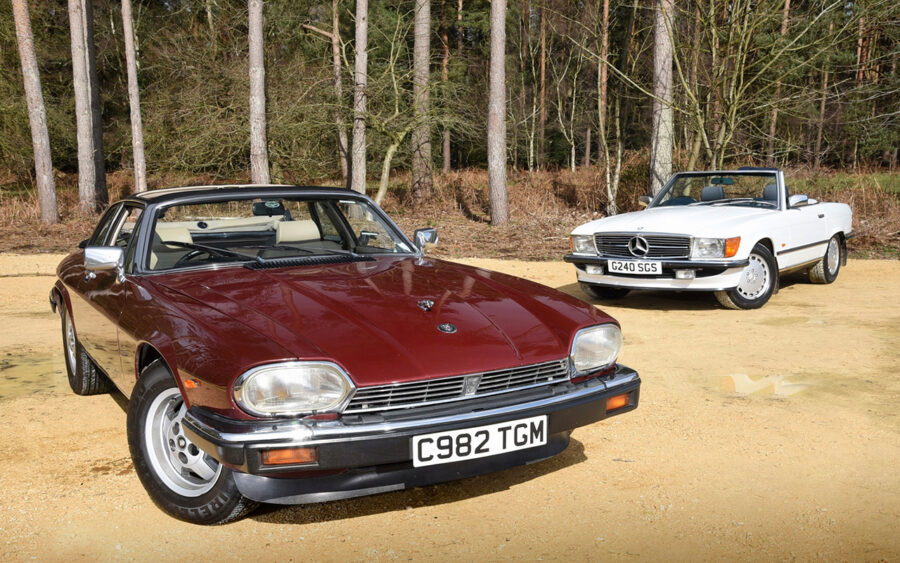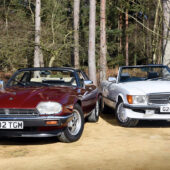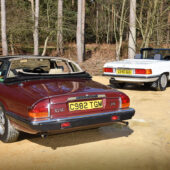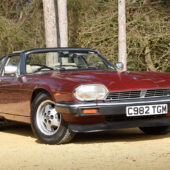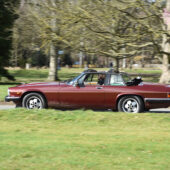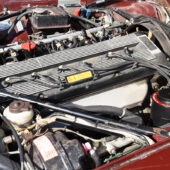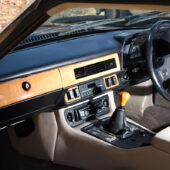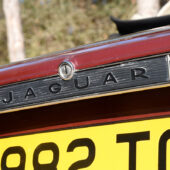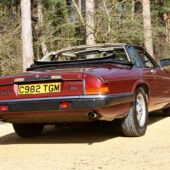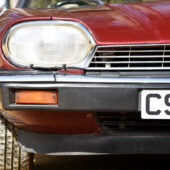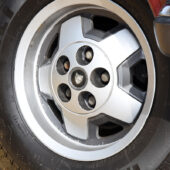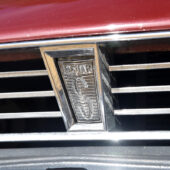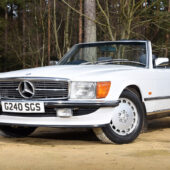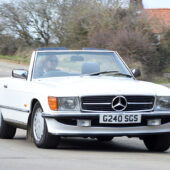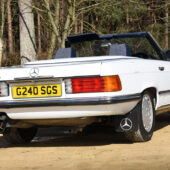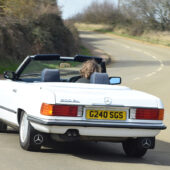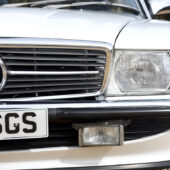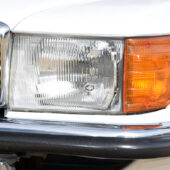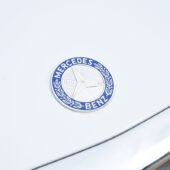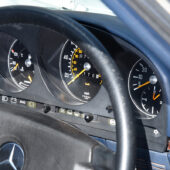Jaguar XJ-SC or Mercedes SL? We decide which aspirational 1980s convertible is the better choice today
Words: Sam Skelton Images: Paul Walton With thanks to: Kim Cairns Classic Cars
The Mercedes-Benz SL was the car to have in the 1970s and 1980s – nothing screamed success quite so loudly as the drophead German on the gravel driveway. And while many rivals were offered in its 18 year lifespan, most of those came with fixed roofs courtesy of scare stories from America, where it seemed that the open car could well be banned. But as that scare passed, more upmarket convertibles and conversions trickled onto the market.
The Jaguar XJ-S came in for its fair share of conversions, notably from Ohio-based converter Hess and Eisenhardt. But it was the launch of the XJ-SC in 1984, developed in part by Aston Martin’s Tickford subsidiary, that really started the ball rolling for Jaguar. For the first time since the E-type it had a factory-produced convertible to take on the Mercedes, and its six-cylinder engine and manual gearbox meant that it offered far more sporting potential than the soft-top from Stuttgart.
Not that this was the first time the two ranges had crossed swords. The big V8-powered Mercedes-Benz 450SLC, a slightly longer, fixed head variant, had been doing battle with the XJ-S from 1975 until its discontinuation in 1981. The two model families were constantly vying for their spots alongside the rich and famous, even if for the first eight years of its life the Jaguar’s chances had been hampered by its single model V12 range. By contrast, Mercedes could offer a six cylinder, a small V8 or a big V8 in the forms of the 280SL, 350SL and 450SL – later to become the 300SL, 380 and 420SL, and 500SL as time led to facelifts and newer engine families.
The XJ-S was met with some consternation at its launch in 1975. Was this angular machine really supposed to replace the sporting E-type? Today, people make a meal of the earliest models not even having wood inside, but then nor did the E-type it replaced. While the E-type had begun life as a sports car and then softened into a grand tourer, the new car was a GT from the outset, designed to take on the BMW CS and the Jensen Interceptor. Jaguar offered just one engine – the 5.3-litre V12 – and two gearboxes, though the four speed manual sold so slowly it was withdrawn from catalogues in 1979 leaving the three speed auto as the sole variant.
A revision to the engine for higher efficiency in 1981 gave us the XJ-S HE, now with Series 3 style rubber bumpers and burr elm in the cabin. From 1983 Jaguar branched out again offering a new engine and a new body. The 3.6 litre AJ6 was a preview of what would be coming in the saloons, linked initially to a five speed manual only, but later coming with a four speed ZF automatic.
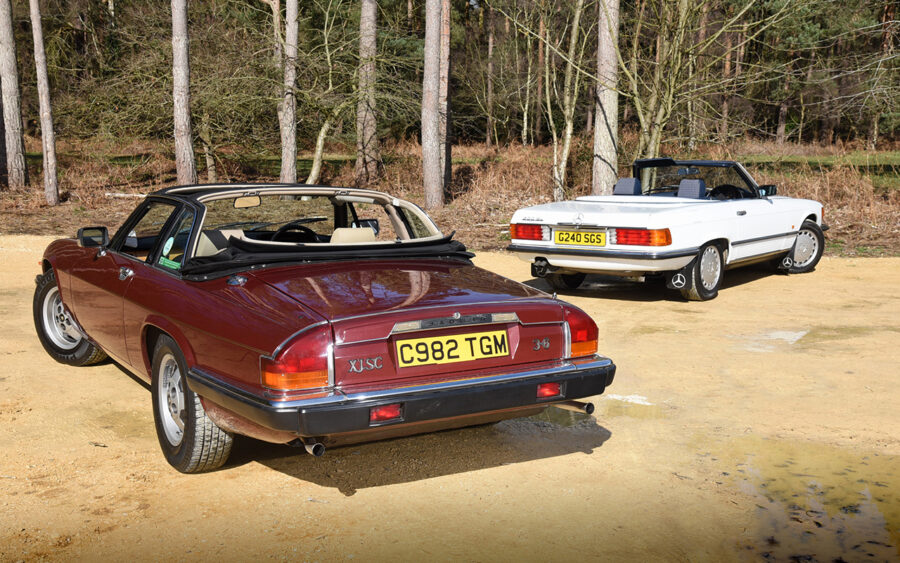
The new body, the XJ-SC, was a targa-topped model intended to offer an open XJ-S while Jaguar readied its full convertible. Bodies began as coupes and were taken from the line to be adapted into cabriolets. The new convertible came along in 1988 – V12 only until after the facelift of 1991 which saw full width rear lights on both models, new bumpers, new side windows for the coupe, and a new name – the XJ-S became the XJS. The 3.6-litre version was upped to 4.0, a move the saloons had undertaken two years earlier, while the V12 would continue as a 5.3 to 1992.
In that year, a new 6.0 version would be released, again previewing the engine for the new XJ12, and a 4.0 version of the convertible would finally be released. Production ceased in 1996, while cars from the last year of production were available in Celebration trim marking twenty years of the model. This brought 16” Speedline wheels, a half wood steering wheel and a number of additional trim upgrades including embossed seats. A total of 115413 XJ-S and XJS models were built.
Four years earlier Mercedes launched the R107 as the 350SL – a replacement for the W113 ‘Pagoda’ that coincided with the launch of the Series 3 E-type. Unlike its predecessor, there was a V8 under the bonnet as its sole engine option – a 3.5 litre unit borrowed from the 280SE 3.5. Alongside it sat the SLC, a coupe version with a wheelbase 14” greater than the roadster intended for S-Class customers. Bigger V8s could be specified in the 450SL and 450SLC from 1973, while from July 1974 six cylinder options were available in both cars, the 280SL and 280SLC.
For 1977 there would be a homologation special based on the SLC, the 450SLC 5.0 – this had an aluminium bonnet and bootlid, spoilers front and rear and a bigger 5.0 variant of the engine, intended for the 1978 World Rally Championship. The next changes to the range were in 1980, when a facelift saw both V8s replaced by the 500SL and 500SLC. The SLC would be discontinued for 1981, but the 280SL and 500SL would continue to 1985. Then, the 280SL would be replaced by the 300SL, and the 420SL would be launched as an interim model with a smaller V8. Production ceased in 1989, as Mercedes launched its new, sleeker R129 SL model.
The Mercedes-Benz is the cleaner-cut of the two to look at – even accounting for the indulgence of the ribbed sections at the bottom of the doors. It’s a shrine to the rectilinear, with square lamps, square sides and a square tail – while this was fresh in the early 1970s, it would have looked dated by the mid to late 1980s when wedgier and more rakish shapes were in battle with aerodynamic offerings. However, its simplicity means that over fifty years on from the model’s introduction, it now looks less dated than many of its contemporaries. The wheels and chin spoiler help it fit in to a new decade, but it only takes a little for an SL to look overdressed – back in the 1990s, an R107 on Zender alloys with a lip spoiler on the boot just looked naff, and it’s an image that it has taken time and more tasteful examples to shift.
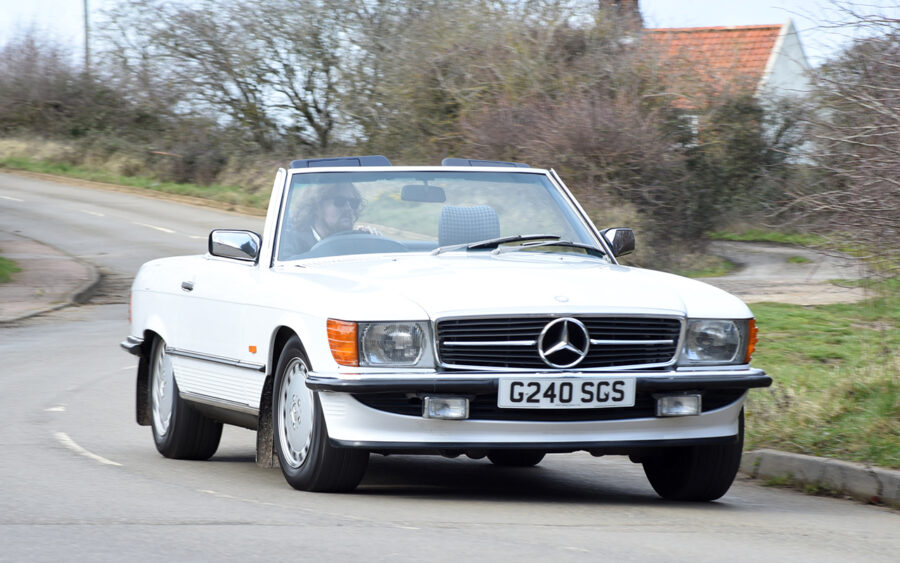
Like the Mercedes, the XJ-S had already undergone a facelift by the time of the launch of this model, the XJ-SC – gaining wood trim, thicker bumpers in the style of the Series III saloon and other small touched to make it feel more like a Jaguar to those who decried the Continental feel of the earliest models. And in this case, it was a successful revision, adding appeal to a car which in its earliest years had attracted as many critics as fanatics.
The new 3.6 engine and manual gearbox broadened its appeal once again, and the hope was that its open roof would do the same. But that roof is the most contentious part of the design – fixed side windows and frames mean that from certain angles, there’s an ungainliness to the car that was never there with the original coupe, and that is rectified by the later, fully open convertible – but then bear in mind that everything is relative. The XJ-SC is a handsome car by most standards; it’s only alongside its siblings that we judge it so harshly. The front end is still sharp, the rear still neat – and the glasshouse, if compromised, is still well-executed. Of the two, most would pick the Merc on cosmetic merit – but we prefer the Jaguar.
Inside, the Mercedes continues its austere theme, with lots of blue plastic, slivers of wood and minimal switchgear. The large steering wheel borrowed from contemporary saloons dominates the cabin, and the dials are clear and legible. It’s tight on space if you’re tall though – the seat didn’t go far enough back either for me or our cameraman Paul, resulting in a splay-legged driving position. But it is a comfortable seat – only Mercedes items feel truly sprung, and while it’s flat at first we know from experience that Mercedes seats get better the longer you spend in them. The vestigial rear seat should be treated as a luggage rack only, as even small children will find it tight on space. The umbrella parking brake feels distinctly unsporting – but then again, this is a tourer.
The XJ-SC on the other hand, while it may be a tourer, feels far more sporting. You sit with your legs straight out in front of you, low and cocooned by a high centre console. There are acres of timber, lots of lovely leather and a nice bank of central switches above the radio. The XJ-SC feels special, not in the ‘exclusive’ way the Mercedes does, but in a more obvious way – it feels like there are more toys to play with, and like you can go faster if you like. Again, the steering wheel is saloon derived but it’s smaller and feels nicer in your hands, and while the roof arrangement makes getting in and out more awkward there are no complaints of space when inside.
If you prefer a more modern interior appearance, then the Mercedes offers the simplicity you’ll crave. If you want something more sporting, with a veneer of British civility, the XJ-SC is the better bet. If you’re tall, that would tip the balance in favour of the Jaguar, as the driving position is better-suited to those over six feet.
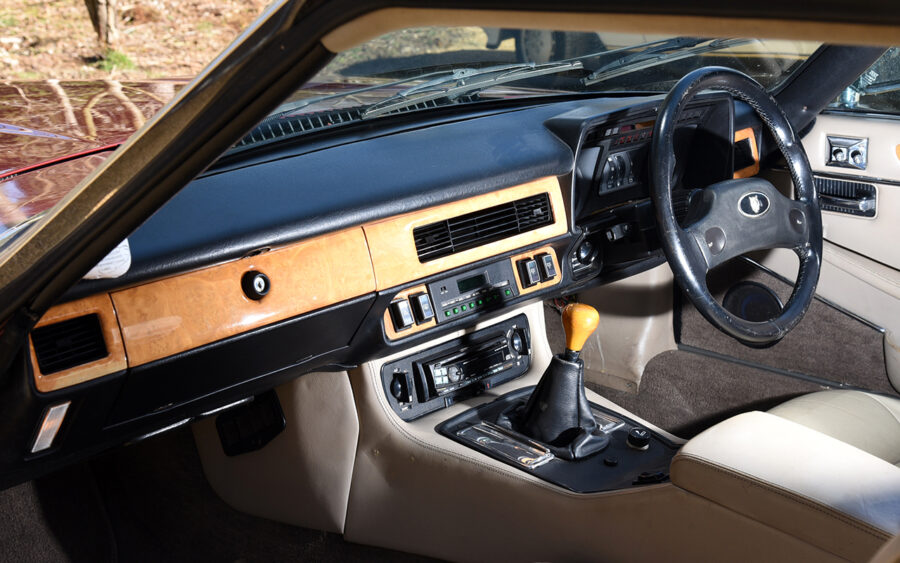
From behind the wheel, the differences continue. The XJ-SC sounds slightly raucous, like a continuation of the XK engine rather than a new design, but it suits the aggressive nature of a true GT. The gear level is slightly longer than we’d like in this cclass of car but it feels definite in action, and the bite point of the clutch is in a good place. Pulling away therefore feels suitably sporty.
What surprises is the ride; as cossetting as an XJ saloon, despite the lower and more urgent feeling of the car in general. Put your foot down and it moves, inviting you to rev hard between gear changes and make some real progress – and it can hold its own in the bends too, its softer and longer travel suspension not hindering unduly when compared with more sporting machinery. But when you want to waft home, it’ll do that too. And that’s what a GT should be – a sports car that’s been to finishing school.
When inside the Mercedes-Benz, everything feels more sedate. The engine is more muted, the automatic transmission lever more delicate – even the Jag’s fly-off handbrake is replaced here with an umbrella-design unit. You sit more upright and it feels much more like a saloon with the roof removed than a sports car despite its name. Set off, and it feels numb compared to the Jaguar – the loss of almost 50bhp noticeable whether touring or trying to drive it hard. And the steering is equally numb in comparison – the car goes where you point it, with more lean and understeer than the Jaguar, and less of a sensation of feedback through the wheel.
The relationship between the seat, steering wheel and pedals is an unusual one, and perhaps better suited for smaller drivers – but it doesn’t allow me to feel as much a part of the machine as I do in the XJ-SC. It doesn’t feel like it was designed for the B-road so much as the boulevard, and while that in itself isn’t necessarily a bad thing, it does mean that the Jaguar is more fun to drive.
From behind the wheel then, the Jag has it. But is that enough to beat the Mercedes?
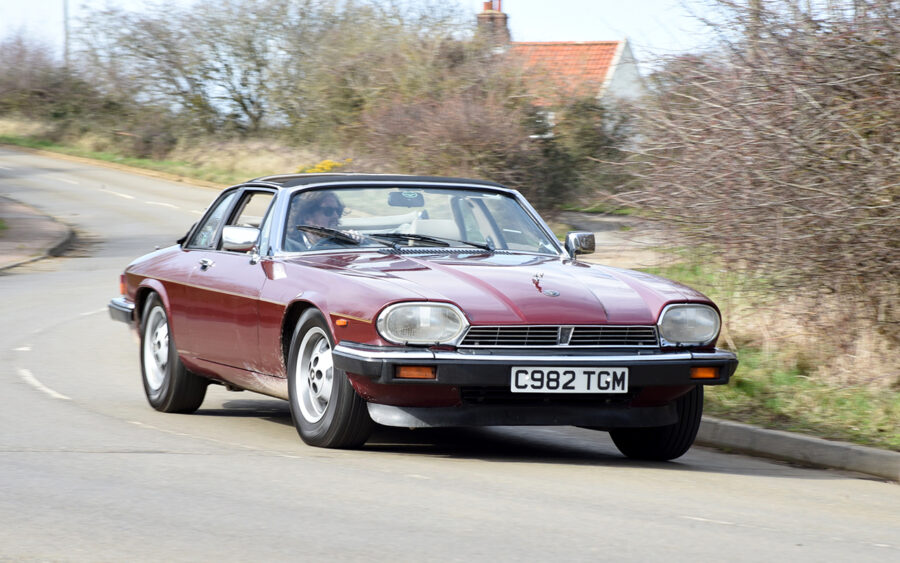
Jaguar XJ-SC vs Mercedes 300SL (R109)
So what’s it to be, XJ-SC or SL? Well, on this occasion we really do think that the Jaguar has it. And while the targa roof arrangement might be more contentious than the open roof of the Mercedes, the fact remains that grand tourers are all about touring, and the Jaguar is a far more engaging long distance companion than the Mercedes. It’s faster, sharper, and more lithe from behind the wheel – added to which, the roof offers more permutations, and it’s a far more dramatic looking machine than the Mercedes whether you like the way it looks or not.
It’s also more roomy long distance – both I and photographer Paul are taller chaps, and the seat in the Mercedes simply doesn’t go back far enough for comfort. The steering wheel is also too big, while in the Jaguar the legs-out seating position means that there’s room for those over six feet tall to spend plenty of time in comfort. The Mercedes has a vestigial rear seat where the Jaguar has a luggage shelf but realistically, that’s all you can do with the space anyway.
Where the Mercedes does score a point is in its build quality. It feels like a well-engineered and considered product, and one that had the benefit of almost two decades’ refining and improving before the point at which our example was made. There are some bits of the Jaguar that feel less well thought through and that have perhaps not aged quite as well – it doesn’t feel as precise as the Mercedes, for all the extra character it offers.
Would we see the same results at the top of the tree if we had pitted a V8-engined Mercedes against a V12 XJ-S? That might be a different story.. But on the basis of the entry level six cylinder cars as tested here, the Jaguar is the one that makes us want to take the long way home.

